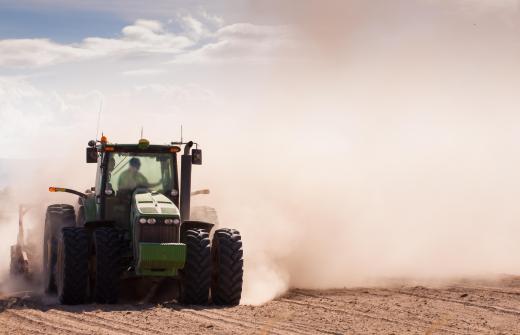A subsoiler is a tool that is connected to a farm trailer and designed to rip into the dirt to loosen it up for farming. Different subsoilers have different ripping depths that determine how deeply into the dirt the tools can reach. This tool must be connected to a trailer, so the size of the tool is important; subsoilers that are too large for the trailer may be difficult to move. Along with ripping depth, the amount of pressure this tool can apply will determine how well it can rip up hard dirt. This tool will break after extended use, but a subsoiler with replaceable blades can keep one from having to buy a whole new unit and, thus, may be less costly to operate.
Ripping depth describes how deeply into the ground a subsoiler can penetrate, and the owner should pick one with a ripping depth that is correct for his or her purposes. The crops being grown and the ground’s current condition can determine whether a deep or shallow tool is required. If the farmer is tending crops with shallow roots, then there may be no need for a deeper tool, while crops with longer roots and harder soil may require a deeper ripping depth.

A subsoiler tool is connected to a trailer, and the trailer pulls it through the dirt. A longer tool usually will work better with large trailers that can pull such a heavy unit, while a shorter one may be better for a smaller trailer. Another consideration is how much land the user must rip up at once. A longer unit tends to cost more, and it may not be worth it if there is only a small amount of land.
Hard land can be difficult to rip into, and ripping depth is not enough to guarantee effective ripping. Another aspect the user should look at is the pressure applied by the subsoiler. Higher pressure means the tool will be better on hard dirt, though it also increases the cost.
A subsoiler is not a lifetime tool, and a majority of units will eventually break after extended use. If the subsoiler comes with replaceable blades, then the user will just need to buy a new blade instead of a whole new unit. This is more common with longer units, especially because they tend to have more than one blade, but smaller units also may be built this way.
